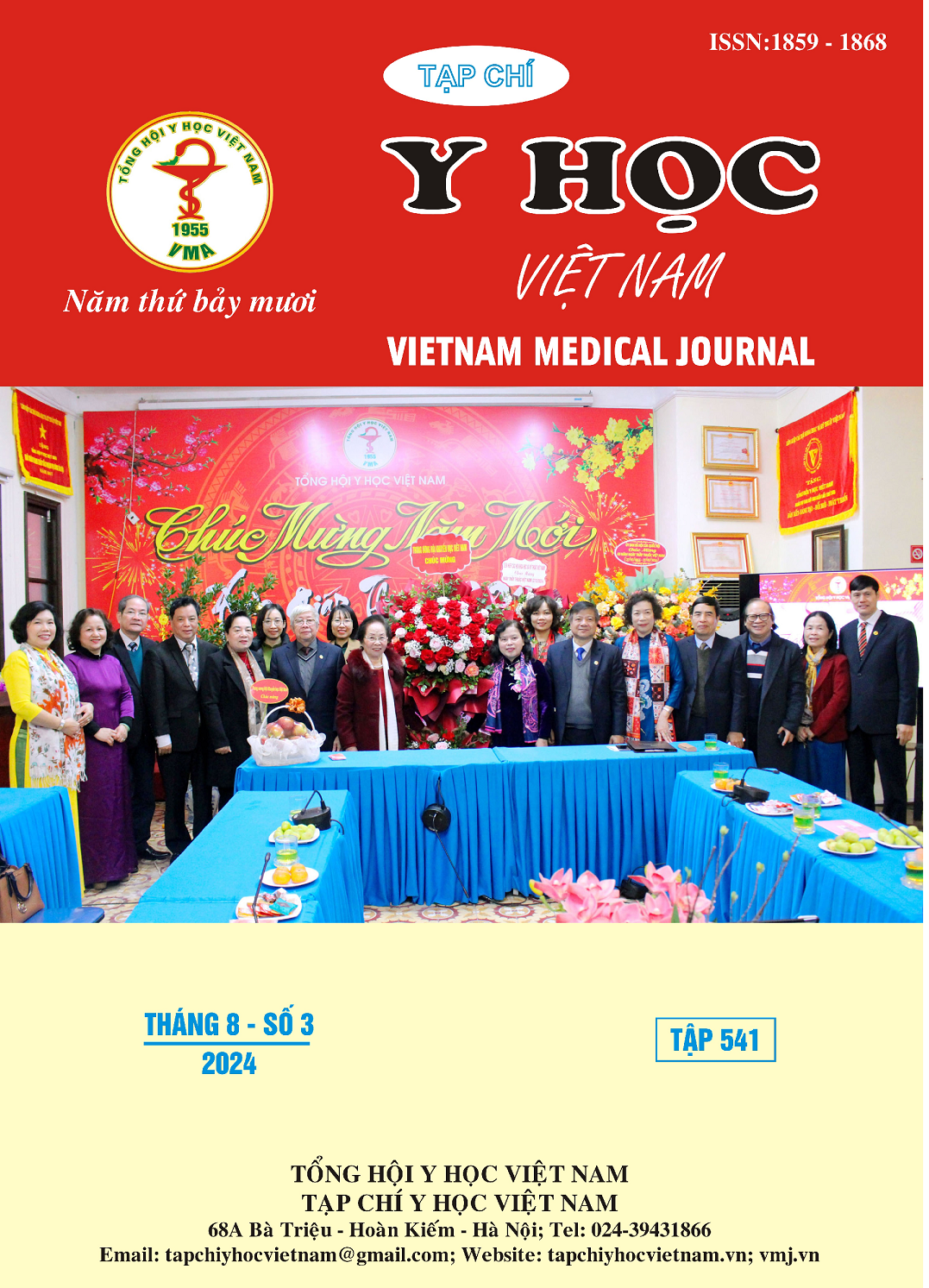MỘT SỐ ĐẶC ĐIỂM LÂM SÀNG, CẬN LÂM SÀNG CỦA BỆNH NHÂN HỘI CHỨNG BUỒNG TRỨNG ĐA NANG ĐIỀU TRỊ TẠI BỆNH VIỆN ĐẠI HỌC Y DƯỢC THÁI BÌNH
Nội dung chính của bài viết
Tóm tắt
Đặt vấn đề: Hội chứng buồng trứng đa nang (HCBTĐN) là rối loạn nội tiết được chẩn đoán phổ biến nhất ở phụ nữ và là nguyên nhân chính gây vô sinh do không rụng trứng. Chẩn đoán sớm hội chứng HCBTĐN rất quan trọng để giảm nguy cơ biến chứng lâu dài tiềm ẩn đối với phụ nữ, do đó chúng tôi tiến hành nghiên cứu với mục đích: “Mô tả một số đặc điểm lâm sàng và cận lâm sàng của bệnh nhân hội chứng buồng trứng đa nang tại bệnh viện Đại học Y Thái Bình năm 2021”. Đối tượng và phương pháp nghiên cứu: Nghiên cứu mô tả cắt ngang có phân tích 34 bệnh nhân HCBTĐN được chẩn đoán theo tiêu chuẩn ESRHE/ASRM Rotterdam năm 2003 được tiến hành từ 1/1/2021 đến 30/6/2021. Kết quả: Nhóm tuổi 25-29 chiếm tỷ lệ cao nhất với 58,8%, Số vô sinh nguyên phát nhiều gấp gần 2 lần số vô sinh thứ phát (23 so với 11), HCBTĐN có thứ tự tỷ lệ kiểu hình là D-A-C-B. Nồng độ LH trung bình là 10,27 ± 4,29. Kết luận: Biểu hiện kiểu hình HCBTĐN trong nghiên cứu hoàn toàn đúng với các tiêu chuẩn của ESRHE/ASRM Rotterdam năm 2003.
Chi tiết bài viết
Từ khóa
Lâm sàng, cận lâm sàng, hội chứng buồng trứng đa nang, Thái Bình
Tài liệu tham khảo
2. J. A. Lentscher, B. Slocum và S. Torrealday (2021). Polycystic Ovarian Syndrome and Fertility. Clin Obstet Gynecol. 64(1), 65-75.
3. Giovanna Muscogiuri, Barbara Altieri, Cristina de Angelis, et al (2017). Shedding new light on female fertility: The role of vitamin D. 18, 273-283.
4. W. M. Wolf, R. A. Wattick, O. N. Kinkade, et al (2018). Geographical Prevalence of Polycystic Ovary Syndrome as Determined by Region and Race/ Ethnicity. Int J Environ Res Public Health. 15(11).
5. The Rotterdam ESHRE/ASRM‐sponsored PCOS consensus workshop group (2004). Revised 2003 consensus on diagnostic criteria and long‐term health risks related to polycystic ovary syndrome (PCOS). Human Reproduction. 19(1), 41-47.
6. Stephen Franks, Mark I McCarthy và Kate %J. International journal of andrology Hardy (2006). Development of polycystic ovary syndrome: involvement of genetic and environmental factors. 29(1), 278-285.
7. Gurkan Bozdag, Sezcan Mumusoglu, Dila Zengin, et al (2016). The prevalence and phenotypic features of polycystic ovary syndrome: a systematic review and meta-analysis. Human Reproduction. 31(12), 2841-2855.
8. Revised 2003. consensus on diagnostic criteria and long-term health risks related to polycystic ovary syndrome (2004). Fertil Steril. 81(1), 19-25.
9. Đào Mạnh Tín (2018). So sánh hiệu quả kích thích buồng trứng giữa Letrozole và Clomiphene citrate trên bệnh nhân có chỉ định bơm tinh trùng vào buồng tử cung, Luận văn thạc sĩ y học, Trường đại học y Hà Nội, Trường đại học y Hà Nội.
10. N. T. Cao, M. T. Le, V. Q. H. Nguyen, et al (2019). Defining polycystic ovary syndrome phenotype in Vietnamese women. J Obstet Gynaecol Res. 45(11), 2209-2219.


